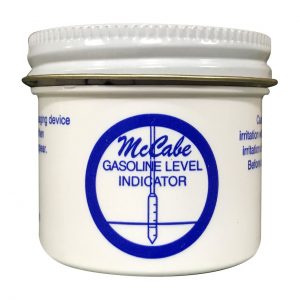Description
The H2O Plus+ Water Level Indicator Paste is a dark green paste that turns dark red when it comes into contact with water. The H2O Plus+ Water Level Indicator Paste is used to detect free water in almost all petroleum products as well as some petrochemicals. It has a toothpaste like consistency and is packaged in a 3.75 oz./106 g. Net Wt. jar.
Use:
Spread a smooth, even coat of the product on the bob or gauging device where you anticipate free water to be present. Lower the gauging device through the petroleum product to the bottom of the tank and leave it for approximately ten seconds or more. Heavier products may require a longer immersion time. If there is water present, the green paste will turn dark red contrasting to the green color above the water level. When reading the results, please note a straight demarcation on the gauging device.
Use in Ethanol Gasoline:
McCabe H2O Plus+ Water Level Indicator Paste can also be used to determine the presence of water and water/alcohol bottoms in ethanol gasoline. There are gradient color changes as one moves through the spectrum of possible water/alcohol concentrations. The normal dark red color change seen when gauging just water bottoms is also seen in water/alcohol bottoms where the bottoms range from 0% to 35% alcohol. Thereafter, the dark red color change lightens to a fuchsia/light purple change in a 50% water/50% alcohol bottom. When the water/alcohol bottom reaches approximately 75% alcohol, the color change is an off white up to 99% or more alcohol (mainly an alcohol bottom).
Please note that you can also do an outage gauge / top gauge to see if ethanol is suspended in your gasoline. The dark green paste will bleach or lighten when it comes in contact with ethanol gasoline. The paste will not change color when in contact with regular gasoline or ethanol gasoline with complete phase separation.




